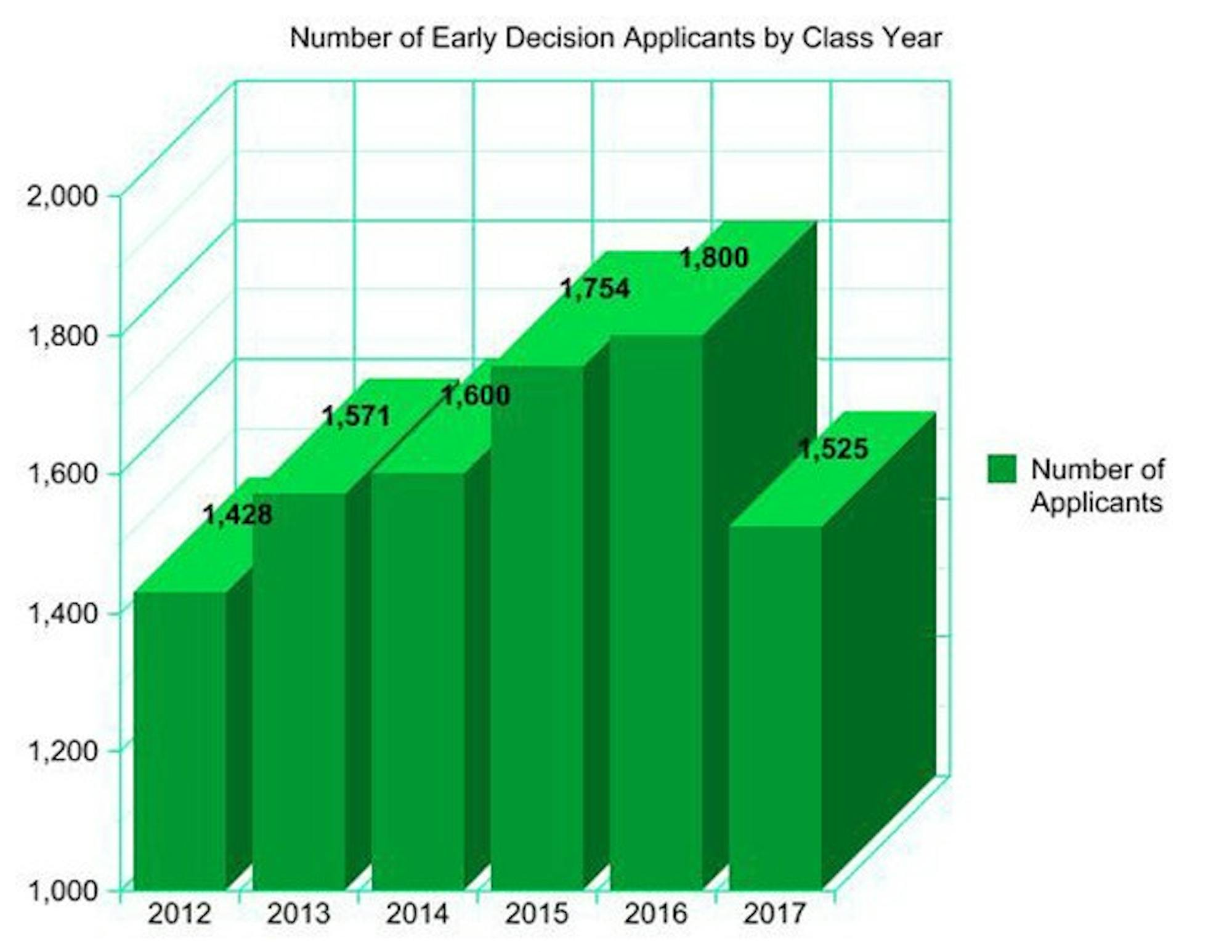The drop in applicant numbers marks a change for the College, which has seen consistently increasing numbers of early decision applicants over the past five years. The last decline occurred with the Class of 2011, when the number of early applicants fell by 2 percent from the previous year.
"Our numbers do fluctuate from year to year, and the composition of every applicant pool is going to fluctuate from year to year as well," Laskaris said. "We are only at the very early stages of it so it's a little hard to speculate where it will all come out."
While the early decision pool has seen a marked decrease, the regular decision pool is consistent with the number of applications submitted last year at this time, Laskaris said.
It is too soon to judge why the application numbers are dramatically down, according to Laskaris.
In the wake of Hurricane Sandy, the early decision deadline was extended from Nov. 1 to Nov. 10 to accommodate students affected by the storm.
"We've tried to be very communicative with students who we knew were in affected areas," Laskaris said. "I do think kids have been able to get their power back, schools have been able to come back in session so that students who have wanted to apply have been able to submit materials."
The Admissions Office will continue accepting early decision applications from students who provide valid reasons for the delay until students are notified about their acceptance in December, Laskaris said. As a result, the pool is expected to grow in the next few weeks.
The early decision pool features more international applicants than last year, though the increase is not as significant as those seen at other institutions throughout the country.
The number of international students at American institutions of higher education increased by 5.7 percent between 2011 and 2012, according to Inside Higher Education.
While the early decision pool comprises between 6 and 7 percent of the total applicant pool, the College has typically accepted 35 to 40 percent of early decision applicants. The percentage of students accepted varies as the reading process reveals the "qualitative aspects" that qualify applicants for admission, Laskaris said.
Since rising costs of higher education reflect a major concern for parents and students applying for admission, the Admissions Office has geared its communication efforts toward providing information about the College's affordability through the use of social media, web publications, visits to high schools and campus presentations, Laskaris said.
Nearly 60 to 65 percent of the total applicant pool is expected to apply for financial aid.
More details about the applicant pool and the Class of 2017 will be available once regular decision applications are accepted on Jan. 1, Laskaris said.
"We have a long ways to go before we hit our regular decision deadline," Laskaris said. "I am very confident that next year's class will be every bit as talented, diverse and outstanding as the classes that have come before it."
The number of early decision applicants at Brown University increased by 1 percent this year, The Brown Daily Herald reported. The University of Pennsylvania saw a record high in its early decision applicants, with a 5.6 percent increase over last year, The Daily Pennsylvanian reported. Early decision statistics for Cornell University and Columbia University have not yet been reported. Harvard University, Princeton University and Yale University all have non-binding early action programs and have not reported application numbers as of press time.




